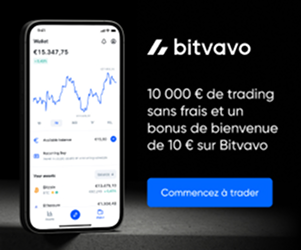Introduction
Trading is the practice of buying and selling financial instruments on the markets with the aim of making profits. This practice, accessible to all thanks to the rise of online platforms, requires a solid understanding of financial mechanisms and a mastery of the associated vocabulary.
Understanding trading terminology is crucial for analyzing markets, executing orders, and developing appropriate strategies. Whether you’re a beginner or an experienced trader, knowing the key terms can help you avoid mistakes and optimize your performance.
This article provides a comprehensive and practical glossary to effectively navigate the world of trading, covering financial instruments, markets, order types, strategies and much more.
Financial instruments
General definition
A financial instrument is an asset or contract that can be traded on financial markets. It represents monetary value and can take various forms.
Main types of instruments
Actions
Stocks represent a share of ownership in a company. By owning shares, investors participate in profits through dividends or increases in the value of those shares.
Bonds
Bonds are debt securities issued by governments or corporations. They allow issuers to raise funds while providing investors with a fixed income.
Currency Pairs (Forex)
In Forex, currencies are quoted in pairs, such as EUR/USD, indicating how many US dollars equal one euro. Forex trading relies on changes in these exchange rates.
Raw materials
Commodities include physical assets such as gold, oil, or agricultural products. These assets are often used to diversify a portfolio or as a hedge against inflation.
Stock indices
Stock indices group together several stocks to measure the performance of a specific market. Examples: the CAC 40 in France or the S&P 500 in the United States.
Derivatives
- Futures: Standardized contracts to buy or sell an asset at a predefined price on a future date.
- Options: Contracts offering the right, but not the obligation, to buy or sell an asset at a fixed price before an expiration date.
- CFD (Contracts for Difference): Allows you to speculate on price variations without owning the asset.
- ETF (Exchange-Traded Funds): Exchange-traded funds offering diversification at a lower cost.
Market Types
Spot Market
Transactions in the Spot market are settled immediately, at the current price. This market is common for currencies and commodities.
Futures Market
Futures markets allow contracts to be traded for future settlements. They are used to speculate or hedge against price changes.
Options Market
In this market, investors buy and sell options contracts, which give the right to buy or sell an asset.
Cryptocurrency Market
Cryptocurrencies like Bitcoin and Ethereum are traded on specialized platforms like Binance or Coinbase.
OTC (Over-The-Counter) Market
The OTC market refers to private transactions carried out outside of regulated exchanges. This market offers increased flexibility but involves counterparty risks.
Types of orders
Market order
A market order is executed immediately at the best available price. It is often used when speed is a priority.
Limit order
A limit order is executed only if the asset reaches a set price or better. It is ideal for controlling transaction costs.
Stop order (Stop-loss)
Stop-loss automatically sells an asset when its price reaches a certain threshold, thus limiting losses.
Trailing stop order
This order dynamically adjusts the stop-loss level based on favorable price movements.
Conditional orders
These orders are executed only when certain predefined conditions are met.
Essential concepts in trading
Leverage
Leverage is the ability to increase market exposure using borrowed funds, thereby magnifying gains and losses.
Margin
Margin is the capital required to open and maintain a leveraged position.
Spread
The spread is the difference between the purchase (ask) and sale (bid) price of an asset.
Slippage
Slippage occurs when a trade is executed at a different price than expected, often due to volatility.
Volatility
Volatility measures the amplitude of price variations. It is a key factor in choosing strategies.
Liquidity
Liquidity indicates how easy it is to buy or sell an asset without influencing its price.
Drawdown
Drawdown measures the maximum loss incurred between a peak and a trough within a given period.
Market analysis
Technical analysis
Technical analysis relies on charts and indicators to predict future movements. Tools include:
- Moving averages (SMA/EMA).
- RSI (Relative Strength Index).
- Bollinger Bands.
- Fibonacci retracements.
- MACD (Moving Average Convergence Divergence).
Fundamental analysis
It evaluates assets based on economic, financial or sectoral factors, such as financial results or interest rates.
Sentimental analysis
This method takes into account investors' overall emotions and expectations, influenced by economic and political news.
Psychology and risk management
Managing emotions
Traders should avoid fear and greed, which can lead to impulsive decisions.
Discipline
Following a rigorous strategy is essential to remain consistent in the face of market fluctuations.
Risk management
- Stop-loss: Limit potential losses.
- Diversification: Spread investments across different assets.
- Limiting risky funds: Do not expose more than a certain percentage of your capital per transaction.
Common abbreviations and jargon
Essential terms
- PIP: Smallest unit of variation in Forex.
- Spread: Difference between bid and ask.
- Bullish/Bearish: Bullish and bearish trends.
- Hawkish/Dovish: Aggressive or accommodative monetary policies.
- FOMO: Fear of missing out.
- Correction: Temporary pullback after an uptrend.
Trading Strategies
Common approaches
- Day trading: Open and close positions on the same day.
- Swing trading: Exploiting trends over several days.
- Scalping: Small, quick profits on very short movements.
- Arbitrage: Taking advantage of price differences between markets.
- Hedging: Reducing risk by taking offsetting positions.
- Trend following: Tracking trends over the long term.
Tools and platforms
Trading platforms
- MetaTrader, TradingView : Advanced technical analysis.
- Binance, Interactive Brokers: Specific to cryptocurrencies and equities.
Useful resources
- Demo accounts: Risk-free practice.
- Economic calendar: Identify major events
- Trading journal: Track performance.
Conclusion
Understanding the trading lexicon is essential for success in the financial markets. This article provides you with a solid basis for expanding your knowledge and optimising your strategies. Keep learning with glossaries, training courses and practical tools such as demo accounts.
Glossary of stock market vocabulary
A
- Shares: Units of ownership in a company, entitling the holder to a share in its profits.
- Fundamental analysis: Valuation of an asset based on economic and financial data.
- Technical analysis: Study of past price movements to predict future trends.
- Ask: The price at which a seller is prepared to sell an asset.
B
- Bearish: Term describing a downward trend in a market.
- The price at which a buyer is prepared to buy an asset.
- Bullish: Term describing an uptrend in a market.
- Bollinger Bands: Technical indicator measuring price volatility.
C
- CAC 40: Index of the 40 largest companies listed in France.
- CFD (Contracts for Difference): Instrument used to speculate on price variations without owning the underlying asset.
- Correction: Temporary withdrawal of the price after a prolonged rise.
- Cryptocurrencies: Digital currencies such as Bitcoin or Ethereum.
D
- Day trading: Strategy where positions are opened and closed on the same day.
- Drawdown: Maximum loss recorded between a peak and a trough over a given period.
- Diversification: Strategy of investing in different assets to reduce risk.
E
- Leverage: Use of borrowed funds to increase exposure to the market, magnifying gains and losses.
- ETF (Exchange-Traded Funds): Exchange-traded funds offering diversification at lower cost.
F
- Fibonacci retracements : Technical indicator used to identify support and resistance levels.
- Forex: Currency market where currency pairs are traded.
- FOMO (Fear of Missing Out): Fear of missing an opportunity, Futures: Standardised contracts to buy or sell an asset at a specified price on a future date.often felt in volatile markets.
- Futures: Standardised contracts to buy or sell an asset at a specified price on a future date.
H
- Hedging: Strategy of reducing risk by taking offsetting positions.
- Hawkish/Dovish: Attitudes of central banks regarding monetary policy, ‘hawkish’ being restrictive, ‘dovish’ accommodating
I
- Stock market index: Measure of the performance of a group of shares (e.g. CAC 40, S&P 500).
- Illiquidity: Difficulty of buying or selling an asset without affecting its price.
- Relative Strength Index (RSI): Indicator measuring the speed and amplitude of price changes.
L
- Liquidity: Ability of a market or asset to be bought or sold easily without affecting its price.
- Long: Position betting on the rise of an asset.
M
- MACD (Moving Average Convergence Divergence): Technical indicator used to identify changes in trend.
- Margin: Amount required to open a leveraged position.
- Spot market: Market where transactions are settled immediately at the current price.
- Momentum: Measure of the speed of price movement.
O
- Options: Contracts giving the right (but not the obligation) to buy or sell an asset at a fixed price.
- Market order: Order executed immediately at the best available price.
- Limit order: Order to buy or sell at a specified or better price.
P
- PIP: Smallest unit of variation in Forex, often equal to 0.0001 for most currency pairs.
- Derivatives: Instruments that derive their value from an underlying asset, such as futures or options.
- Short position : Selling an asset to take advantage of a fall in price.
R
- Rally: A rapid and sustained increase in market prices.
- Resistance: Price level where selling pressure could stop a rise.
S
- Scalping: Strategy of taking advantage of small price movements over very short periods.
- Slippage: Difference between the expected price of a transaction and the price actually obtained.
- Stop-loss: Order to sell an asset when its price reachesSupport: Price level where demand can prevent a fall. a threshold in order to limit losses.
- Support: Price level where demand can prevent a fall.
T
- Take-profit: Order that automatically closes a position when the price reaches a certain profit threshold.
- Trailing stop: Stop-loss that can be automatically adjusted in line with price movements.
- Trend following: Strategy of following an upward or downward trend.
V
- Volatility: Measure of the speed and amplitude of changes in the price of an asset.
- Volume: Total quantity of an asset traded over a period.
FAQ
What is a PIP?
A PIP (Point in Percentage) is the smallest unit of variation in Forex trading. For example, if the EUR/USD pair moves from 1.1050 to 1.1051, this represents a variation of one PIP.
How do I choose a trading platform?
When choosing a platform, take into account :
- Regulation: Make sure it is approved by a recognised financial authority.
- Fees: Compare spreads, commissions and hidden fees.
- Available tools: Technical analysis, compatibility with third-party software (such as MetaTrader).
- Assets on offer: Check that the platform offers the markets you want to trade (equities, forex, cryptocurrencies, etc.).
What is the difference between technical analysis and fundamental analysis?
- Technical analysis: Studies charts, trends and indicators to predict future price movements.
- Fundamental analysis: Evaluates the intrinsic value of an asset by examining economic, financial or sectoral data.
What strategies are suitable for beginners?
Beginners can start with :
- Day trading on demo accounts to get used to fast movements.
- Swing trading to follow trends over several days.
- Diversification to limit risk.
- Using stop-losses to protect capital.
Why is psychology crucial in trading?
Psychology plays a key role, as emotions such as fear and greed can lead to impulsive decisions. Remaining disciplined and following a pre-established plan is essential for success.
What tools are essential for effective trading?
- Platforms such as MetaTrader : For technical analysis.
- Economic calendars: For monitoring major events.
- Trading diaries: To analyse your performance and correct your mistakes.
- Demo accounts: For risk-free practice.
What does the spread mean in Forex?
The spread is the difference between the buy price (ask) and the sell price (bid). It represents the initial cost of a transaction, often expressed in PIPs. Spreads can vary according to market volatility and liquidity.







